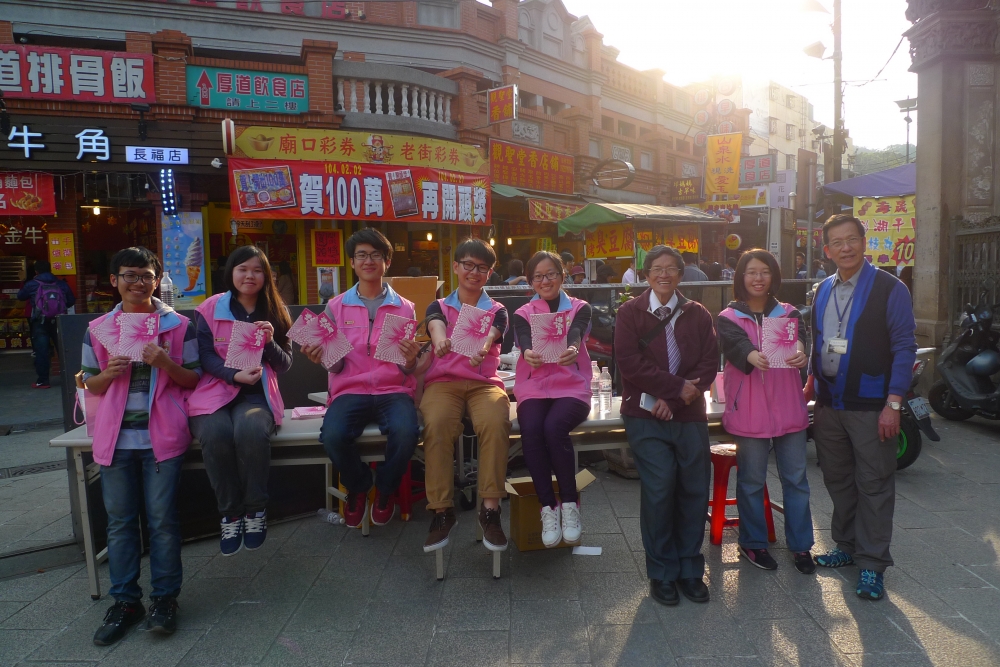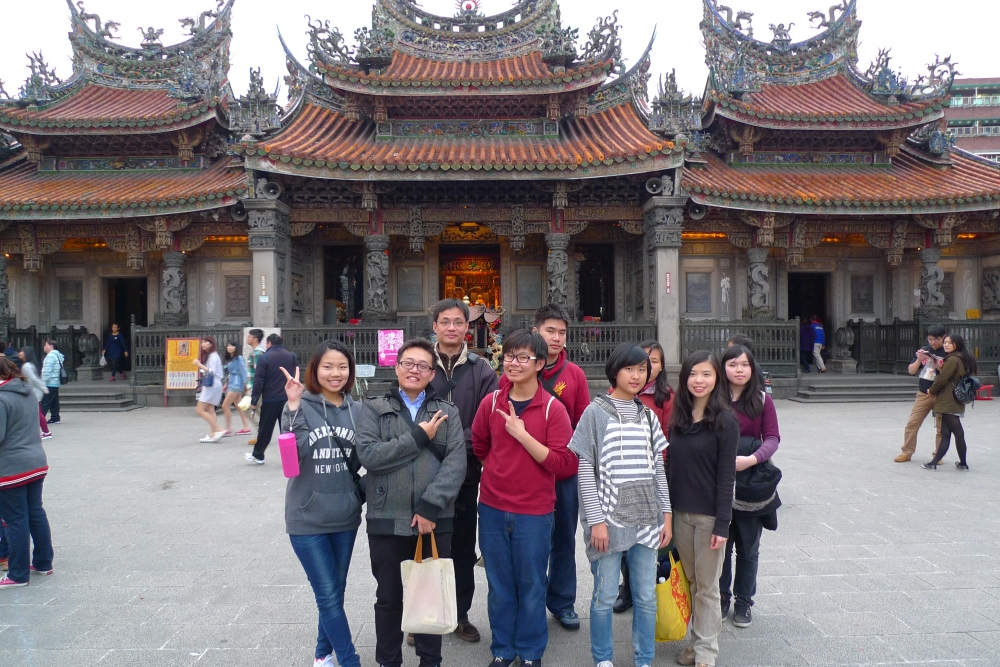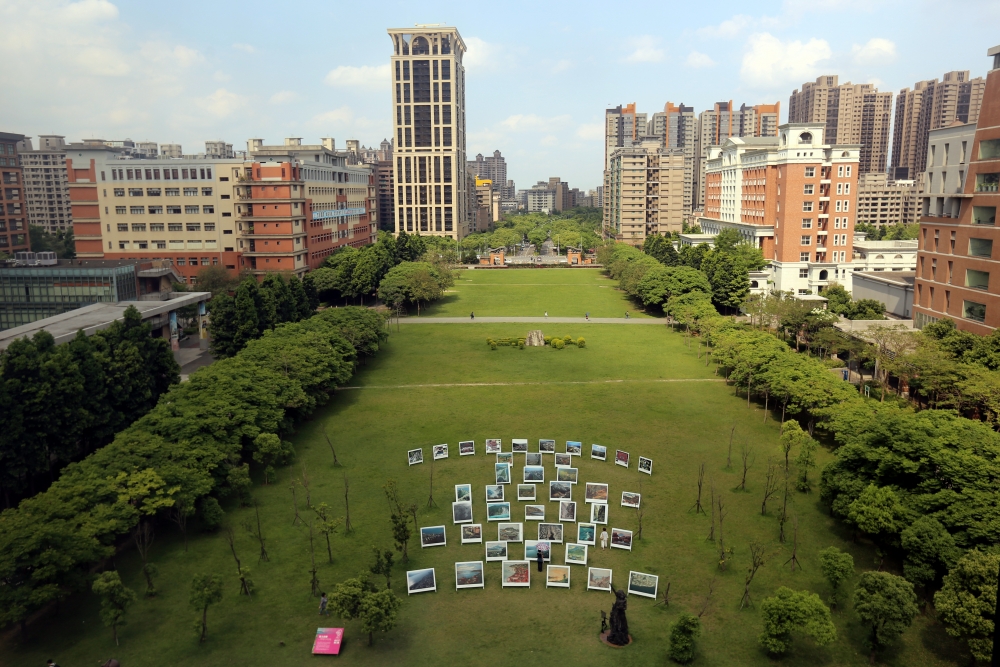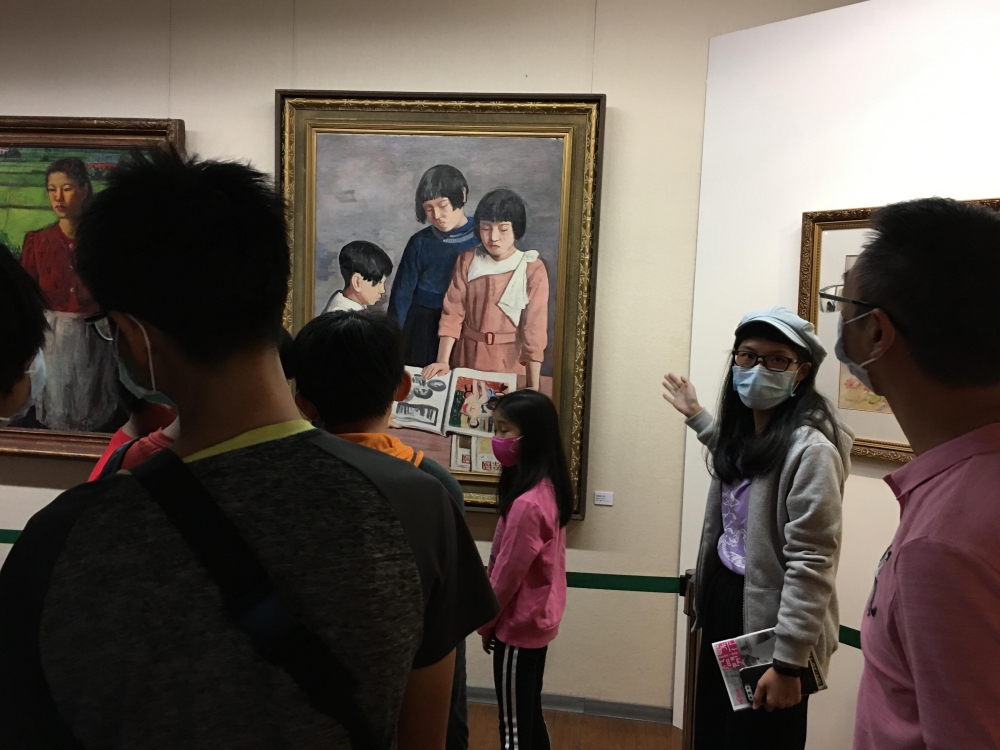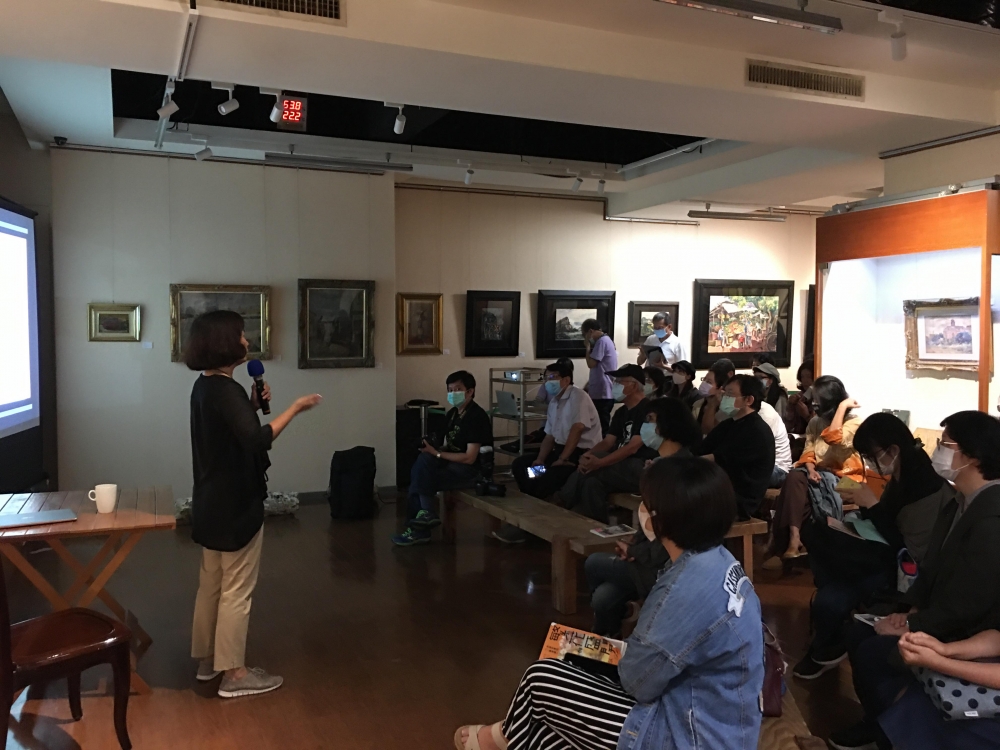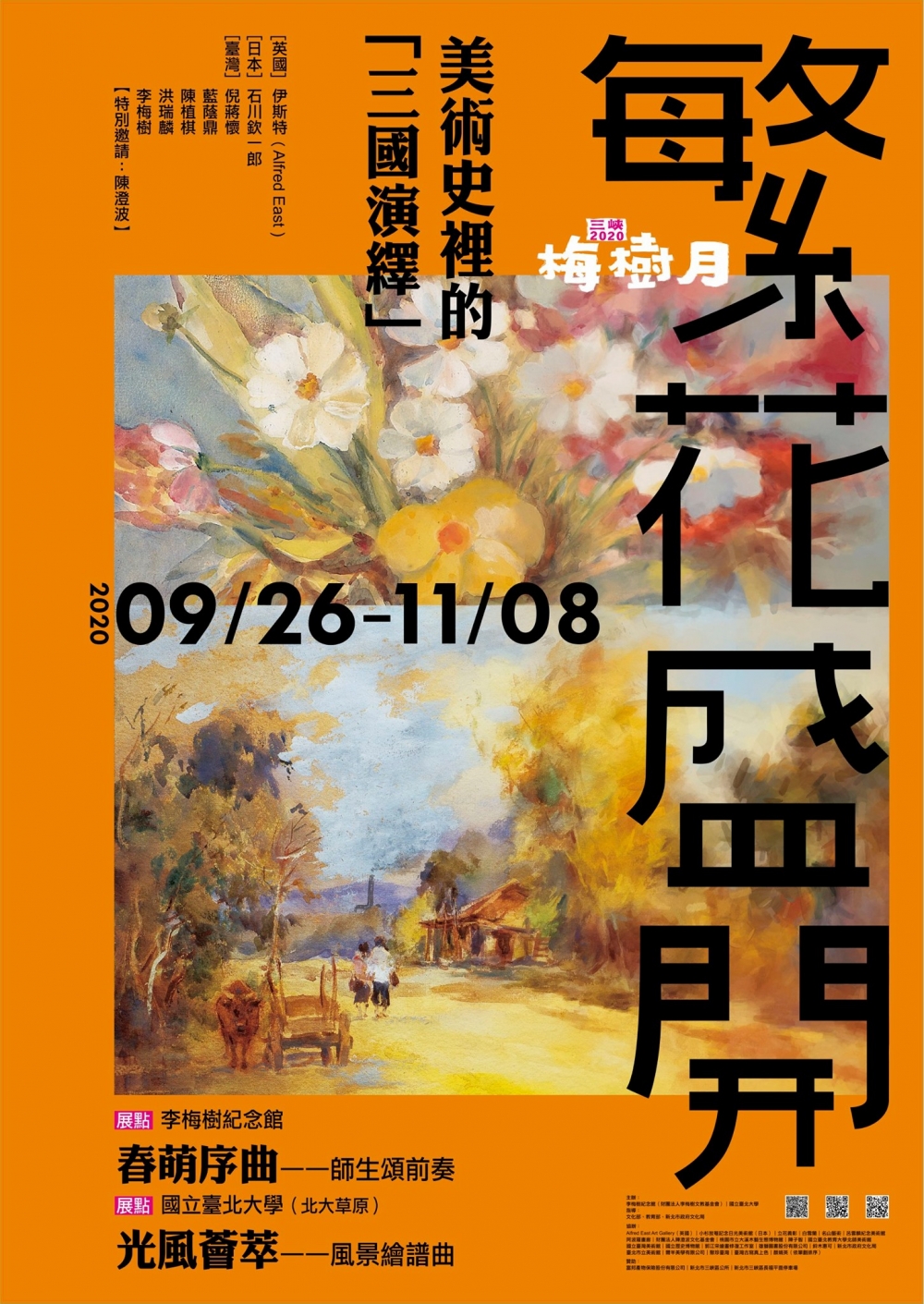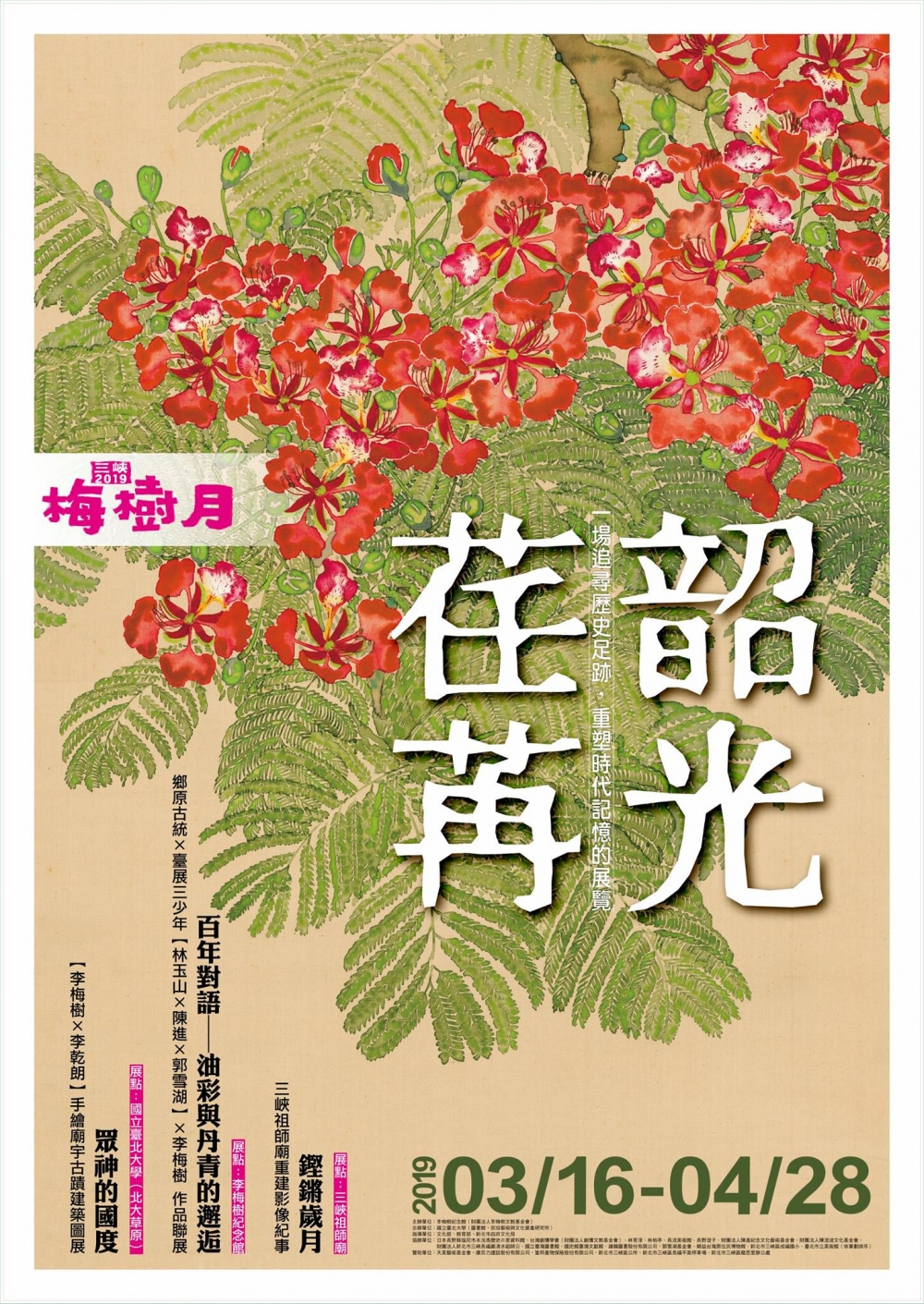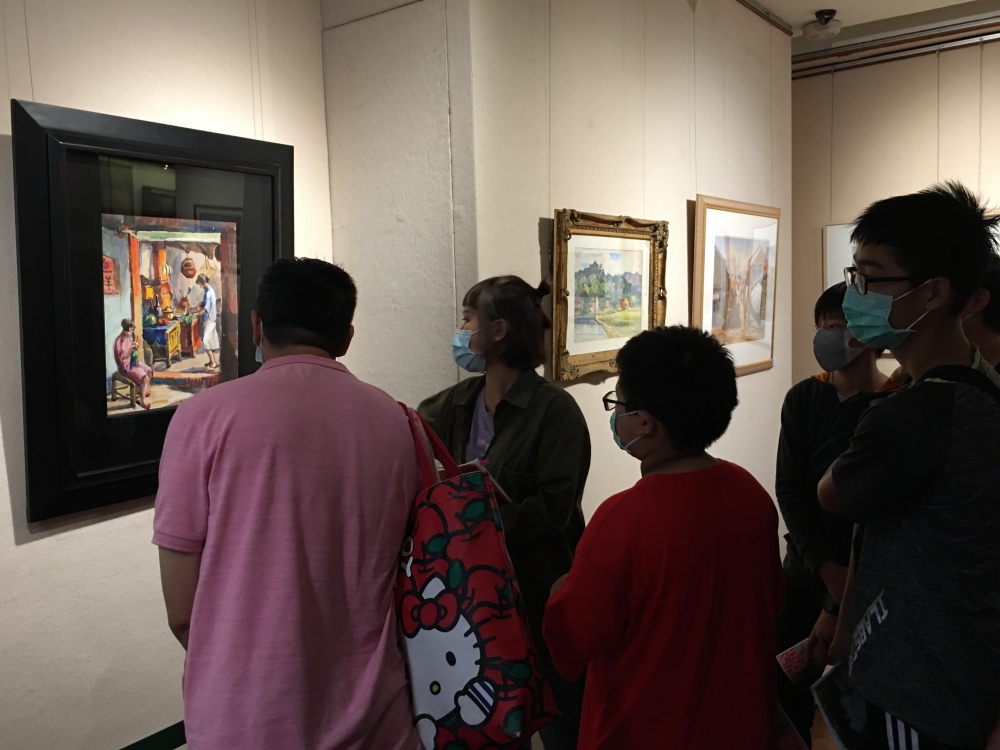Grafting‧New Soil|Those good days of Li Mei-shu with National Taipei University
In the past, the old Sanxia people called Li Mei-shu as “Xian-ai”. He was born during the Japanese occupation period. He went to Japan to study at the age of 26 and went to Tokyo Art School to study painting with the encouragement and sponsorship of his brother Liu Qing-gang, despite the opposition of his family. After six years of studying, Li Mei-shu’s paintings have repeatedly achieved good results.
The most beautiful and contemporary treasure left by Li Mei-shu in the Sanxia is the reconstruction of the Qingshui Zushi Temple. He took the students to participate and designed the ZuShi Temple into an oriental art palace. The gorgeous temple decoration still attracts the amazing eyes of many domestic and foreign travelers.
In 1930, his elder brother Dr. Liu Qing-gang, who supported him the most, passed away suddenly, which was the biggest blow in his life. He once said: “I won’t worry when my father died, but when my eldest brother died, I almost died too.” In order to live up to his brother’s expectations, after returning from school, he also paid close attention to society and politics. In 1934, he was appointed as councilar of the 8th Sanxia Village Assembly by The Taiwan Sotokufu, and was elected as a councilor of the 9th Sanxia Village Assembly in the first election in Taiwan’s history in 1935. Not only was re-elected in 1938, but in 1940, when Sanxia Village was restructured into Sanxia Street, he continued to serve as a member of the Street Assemblies, and served as the head of the Sanxia Street tea group and the head of the Fenggong Youth League. In the early postwar period, he was appointed as the acting street mayor of Sanxia. He also served as the chairman of the Township People’s Council, the chairman of Sanxia Farmers Association, and the Taipei County Councilor. His roles were quite diverse.
After the death of Li Mei-shu in 1983, his sons Li Jing-yang, Li Jing-Guang, and Li Jing-wen began to organize the works of Li Mei-shu and the relics of Dr. Liu Qing-gang, and successfully established the “Liu Qing Gang Physician and Professor Li Mei-Shu Memorial Hall.” (1990) and “Li Mei-Shu Memorial Gallery” (1995), hoping to preserve and carry forward the works of “Mei-shu Xian-ai” in Sanxia. Since 2012, the Li Meishu Memorial Hall has collaborated with a number of local artists from Sanxia to establish the "Mei Shu Month" Art Festival, which exhibits Li Mei-shu’s paintings in the form of an outdoor wallless gallery.
Li Mei-shu is the youth of the old Sanxia people, but not in the memory of the new residents. Looking back at the establishment of National Taipei University 20 years ago, a new "National Taipei University District" has formed in the surrounding area. The residents here are mostly immigrants, who are unfamiliar with the local story. In order to give them the opportunity to get close to the local culture, since 2015, National Taipei University has cooperated with the “Li Mei-Shu Memorial Gallery” since 2015 . Since then, the timeless scent of the plum tree has not only diffused in the campus air, It is also integrated into the special landscape of the campus.
The first association between National Taipei University and Li Mei-Shu Memorial Gallery started in 2001 when the “Professor Li Mei-shu Centennial Symposium” was co-organized. In order to keep Li Mei-shu’s artworks forever, after the seminar, the College of Humanities started the investigation of the Zushi Temple and launched the design and planning of local courses, so that the historical materials, monuments, culture and art of the SanYing Area will become the formal courses for students.
The “Mei Shu Month” is even more meaningful for the teachers and students of National Taipei University in 2020. We have begun to train student as volunteers to practice in the Li Mei-Shu Memorial Gallery. Not only for nurturing guides, but also for working with the memorial to create and revitalize Li Mei-shu’s art, participating in the preservation, inventory and data construction of art and cultural relics. Many experts and scholars were also invited to give lectures on art history to integrate Li Mei-shu and the local art culture of Sanxia with the art movement of modern Taiwan.
In fact, Li Mei-shu’s paintings are very popular. For decades, many collectors have inquired through various channels. But Li Jing-wen, chief executive of the Li Mei-Shu Memorial Gallery, said: "Li Meishu cannot do without Sanxia." Sanxia has nourished Li Mei-shu’s painting talents. It is Li Meishu’s favorite hometown in his life, and should be the hometown of his paintings forever. The Li brothers gave up huge sums of money and insisted on protecting paintings, only to keep the art and cultural assets in Sanxia forever.
As the highest university in Sanxia area, National Taipei University is duty-bound to assume the responsibility of continuing and preserving this important local cultural asset. We are willing to cooperate with Li Mei-Shu Memorial Gallery to continue this “Mei Shu Years”. We sincerely hope that this old “Mei Shu Tree” which “grafted” to our campus will re-germinate and bloom, and will last forever.
-
University characteristic Startup Stage Project
-
New Taipei City
-
國立臺北大學
Further reading
Measures for Leaving a Message to Enter the Draw for the Live Streaming of the Opening Ceremony
-
Event Period
From 13:00 to 14:00 on December 12 (Saturday), 2020
-
Event Measures
Log in to your personal Facebook or Google account to proceed with leaving a message; each account with a successful message of #2020usrexpo left before the end of the live streaming of the opening ceremony will have an opportunity to enter the draw, and each account is restricted to winning the prize once only.
-
List of Winners
On December 14 (Monday), 2020, the list of winners will be announced on the event official website https://2020usrexpo.org/) Announcement of the list of winners
Event Prize Content
-
1st Prize
“Huei Yeh” Power Extreme Massage Gun 1 winner
-
2nd Prize
Nestle Dolce Gusto Genio 2 1 winner
-
3rd Prize
KINYO Bluetooth 5.0 Wireless Speaker 2 winner
-
4th Prize
7-11 Gift Voucher valued at NT$200 27 winner
Announcement of the list of winners
The various prizes are expected to be notified via email and also announced on the event official website on December 14 (Monday), please will the prize winners pay attention to the prize-winning information, and send back the relevant documents according to the notices & explanations; no separate notification will be issued.
Notices
- The event period for this event is based on Taiwan time, and the delivery of the rewards is restricted to regions including Taiwan, Penghu, Kinmen, and Matsu.
- Please refer to the actual products for the event rewards, the pictures used on the website are for reference only; no request for changing colors, specs, transfers, or cash redemption will be accepted.
- Our event organizer will not be liable for the follow-up warranty and maintenance of the winning rewards; once the rewards have been collected, signed, and accepted, no reissuance of the rewards will be available if the rewards have been lost, peculated, discarded, or damaged. Please refer to the actual products for the prize rewards, no return or exchange will be accepted; the prize winner must contact the manufacturer of the rewards if there is any issue regarding malfunctioning, damage, or maintenance.
- 1st prize ~ 2nd prize (Winning prizes with a value exceeding NT$1,000 (inclusive): Each prize winner should fill out the “Reward Collection Application and Receipt (will be announced together with the announcement of the list of winners)” within 7 days (including holidays based on the post stamp) starting from the next day with the announcement of the list of winners, and must provide a copy of both sides of the ID card. The copy must be sent to the specified place via registered mail; those passing the deadline will be deemed to give up the prize and rights, and no objections will be accepted from the prize winners.
- 3rd Prize ~ 4th Prize (Winning prizes with a value less than NT$1,000 (inclusive): Prize winners should reply to the prize-winning notifying letter via Email within 7 days (including holidays) starting from the next day of the announcement of the list of winners, to confirm the collection of the rewards and to fill out the relevant info for sending the rewards (to confirm the address for sending the gift), and to accelerate the follow-up qualification review. If the prize winners do not complete the relevant info before the deadline, they will be deemed to give up the opportunity to collect the rewards, and no alternative gifts or reissuance of gifts will be available.
- When the prize winners have completed filling out the prize-winning info, the organizer will double-check the identification data of the prize winners, the rewards will only be sent out when all data is correct.
- All prize-winning qualification needs to be approved by the organizer before it becomes effective, all reviewing standards are based on the organizer as the only reference.
- If the prize winner did not fill in the data complete and correct, or cannot be in contact, or did not send back the required data within the announced time of the rewards, the prize winner will then be deemed to voluntarily give up the prize, no separate notification will be announced.
- According to the R.O.C Tax Act, if the prize winner is an individual residing in Taiwan, and the prize amount (value) exceeds NT$1,000 (inclusive), then a copy of both sides of the ID card will need to be handed in for taxation, which will be incorporated into individual income for the annual taxation. If the prize winner is not an individual residing in Taiwan, 20% of reward tax must be deducted from the reward first regardless of the prize amount before the prize winner can collect the reward. If the prize winner is not an adult, a household registration transcript must be provided along with a letter of consent from the legal representative. If the prize winner is unwilling to pay the tax first, he/she will be deemed to give up the reward, and no objections will be accepted.
- If the prize winner is in violation of the relevant event measures or has other dissents, the organizer is allowed to retrieve the reward and no objections from the prize winner will be accepted. If a judicial dispute is involved, all legal liabilities will be held by the individual. The organizer will not be liable.
- If it is confirmed that the participant used a hacker program or other method that evidently violates the fairness of the event in an attempt to influence the event, the organizer is then allowed to disqualify the participant immediately or to cancel the prize-winning qualification. Compensation will be liable if a loss is caused for the organizer due to this.
- For reasons that the organizer are not liable for, including a computer, network, telephone, or technique issues resulting in the delay, loss, incorrect, unidentifiable, or damaged data uploaded by the participants, the organizer will not be liable for any legal liability, and no objections from the participants and prize winners will be accepted.
- The organizer reserves the rights to review the qualification of the event participants, if the organizer or a third party has reported that the participants are found to use methods that are intentional or evidently violate the fairness of the event, or do not conform to the rules of this event, the organizer will then be allowed to cancel the prize immediately.
- The event measures are stated on the event platform, the organizer reserves the right to alter the event details at any time (participating method, gift content and quantity…etc.); the participants must agree completely to follow and obey the alterations of the event without any objection. Please refer to the announcement of the event measures if alternations have been made to the event measures, no separate notification will be available.
- Unmentioned matters of this event should be handled according to the relevant rules of the civil law; the organizer reserves the rights to maintain, modify, cease and explain the content, as well as to cancel the prize-winning qualification of any prize winner influencing other prize winners’ rights. Refer to the announcement on the platform for the modification info; no separate notification will be available.
- Participants in the event agree to accept the event measures and notices, if, in violation, the organizer will then be allowed to cancel the qualification of the participant or the prize winner, and then request the participant for compensation for the losses caused.
- When the event is unable to be conducted due to force majeure causes, the organizer has the rights to cancel, terminate, modify, or cease the event. Participants in the event are deemed to accept the effectiveness of the rules, for unmentioned matters, the organizer reserves the rights to modify, terminate, and alter the event content details without giving out a separate notification.
TOP


